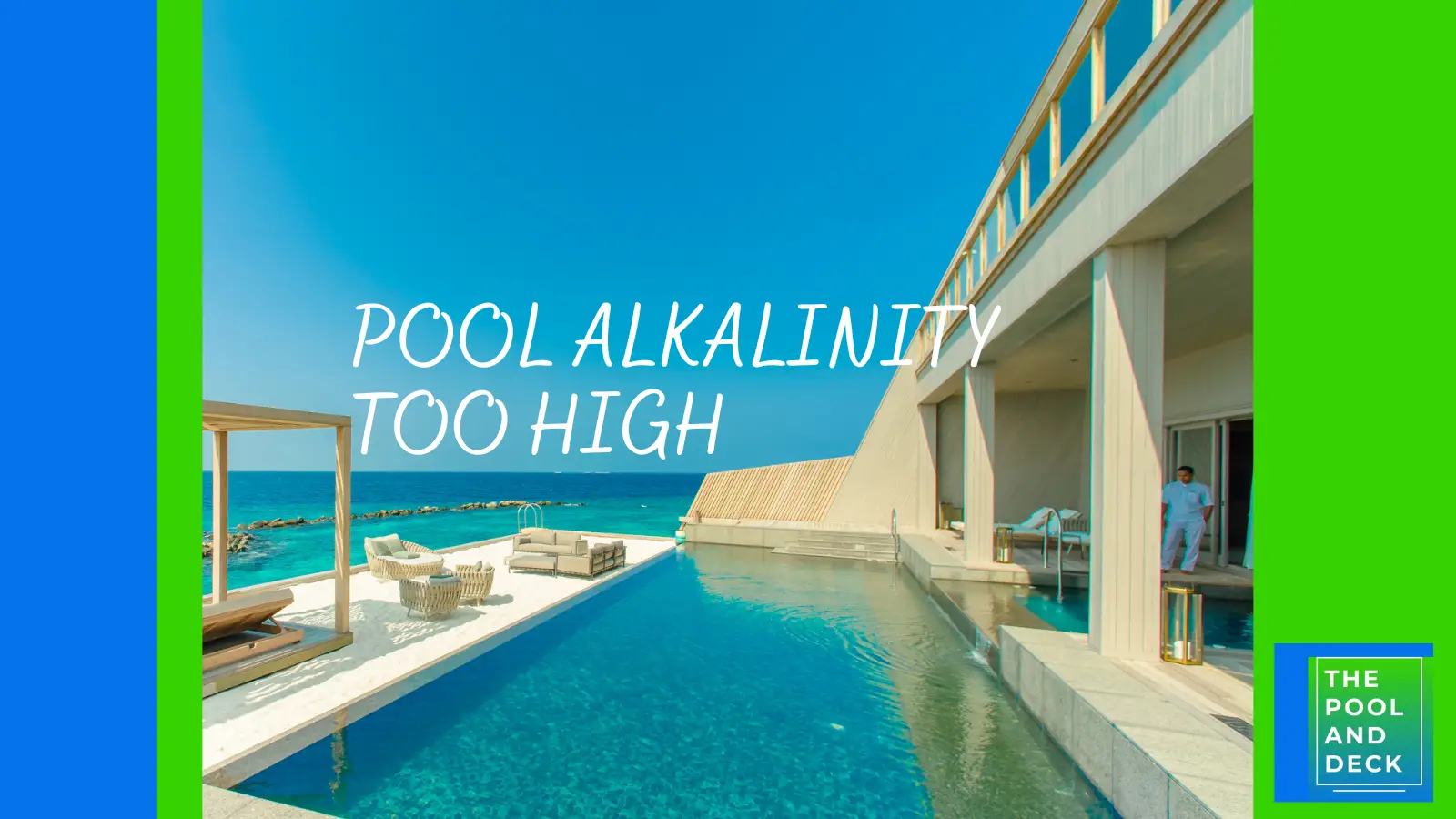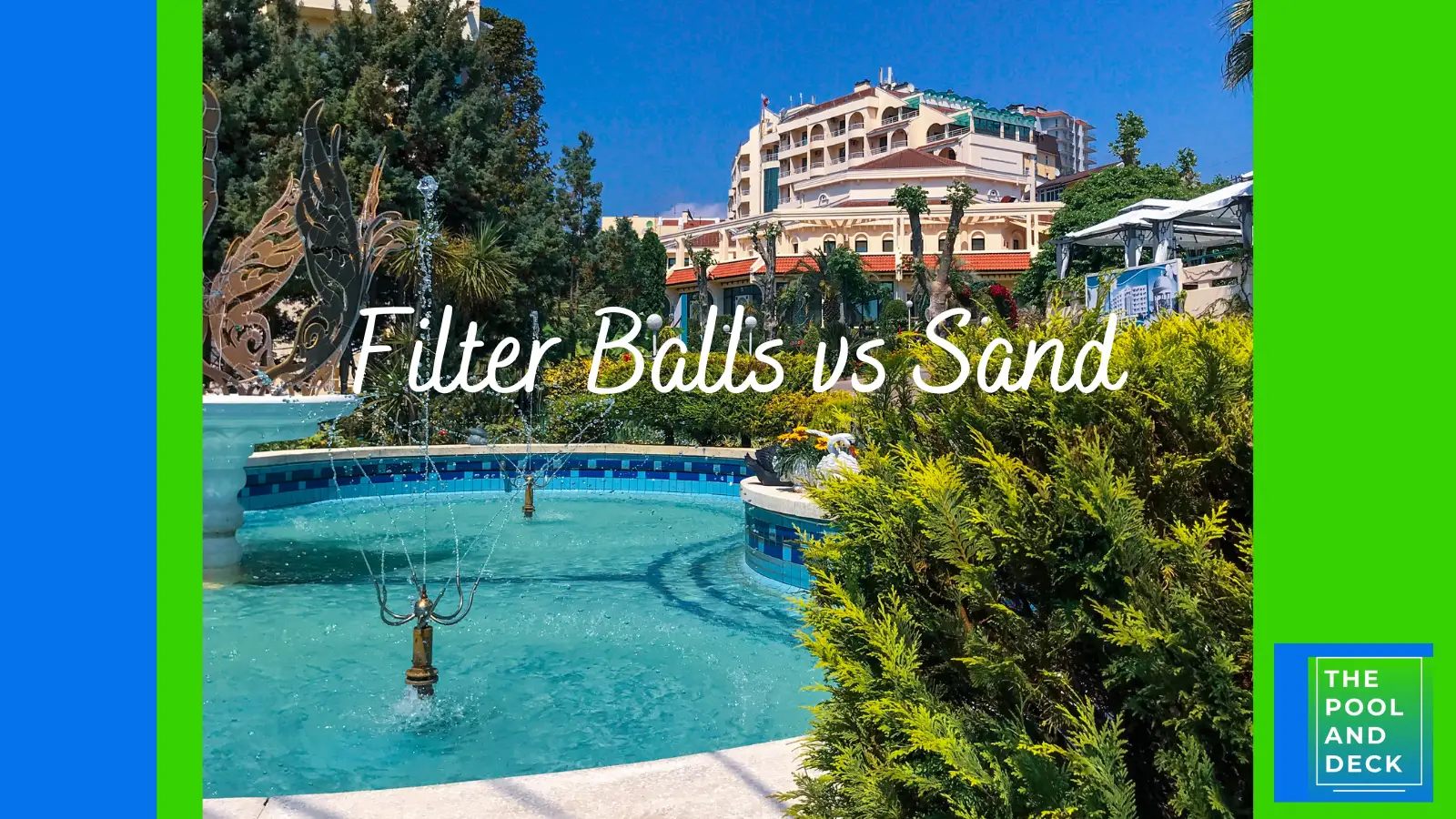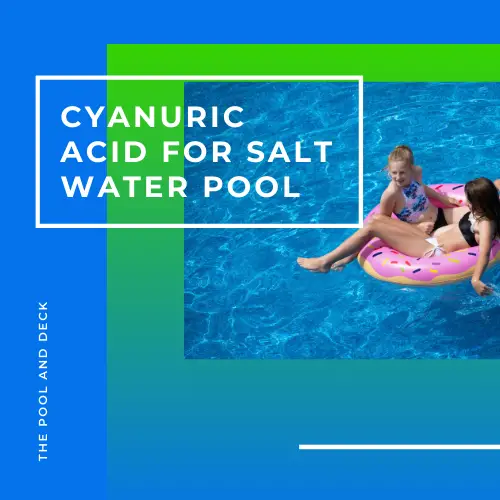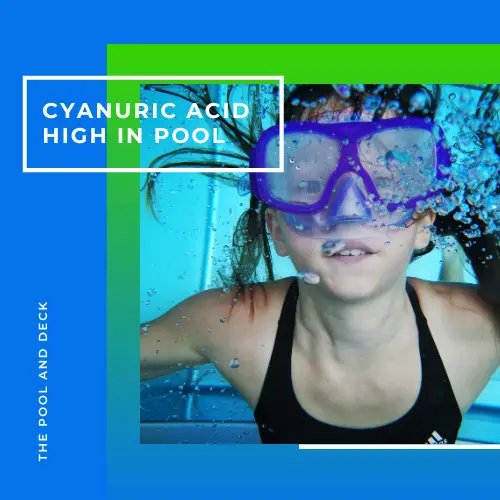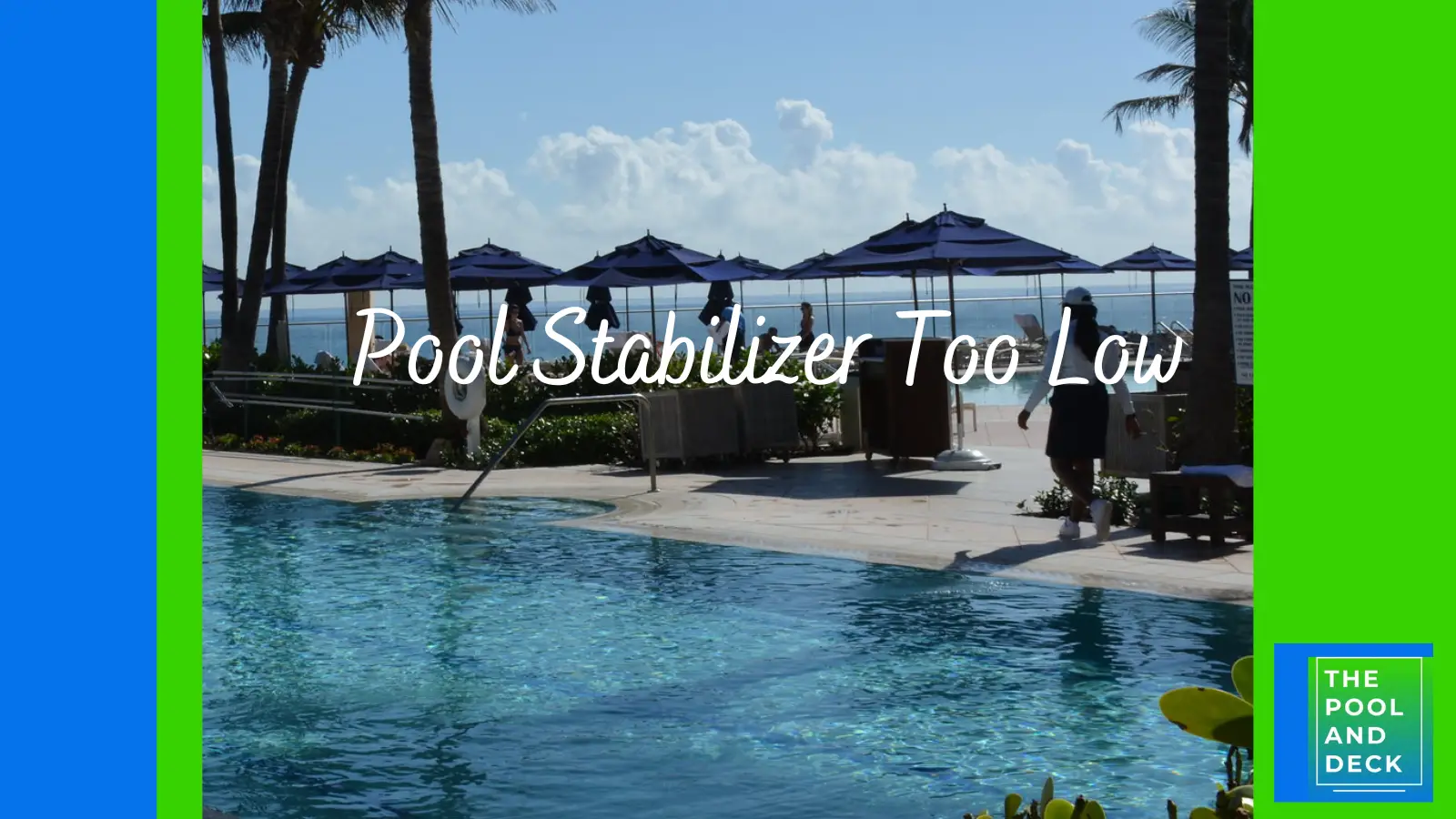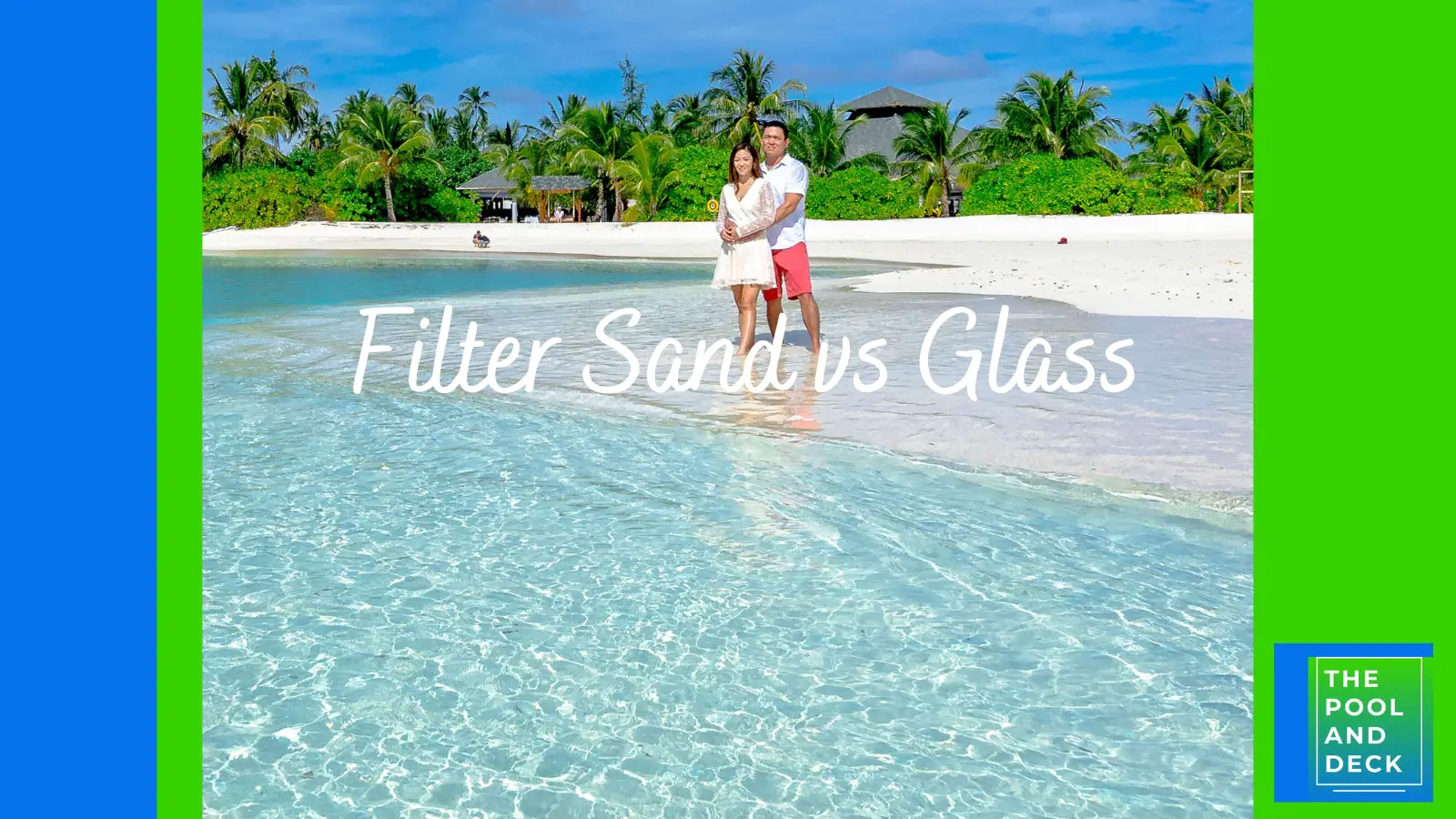Avoid Adding Algaecide and Baking Soda Together to Your Pool in 2024!
thepoolanddeck.com is a participant in the Amazon Services LLC Associates Program, an affiliate advertising program designed to provide a means for sites to earn advertising fees by advertising and linking to Amazon.com . The website is also an affiliate of a few other brands. The affiliate links never increase your purchase price. We do appreciate your support. Thank you very much!
Table of Contents
Adding Algaecide and Baking Soda Together
Why has your pool gone green instead of being crystal clear blue? The answer is algae growth. You have to add Algaecide to your pool regularly to keep the algae in control. But should you be adding Algaecide and Baking Soda together to your swimming pool? Is that the right way?
Algaecide is a swimming pool chemical that prevents algae growth and also kills algae to a degree. Algae increases the pH level of the pool water by increasing the demand on chlorine. The use of Algaecide will lower the pH and make the pool more acidic.
I always recommend Kem-Tek Pool & Spa Concentrated Algaecide as it is very effective for prevention of algae and also helps to clarify cloudy pool water. It has a non-foaming formula and can be used in all types of pools.
Addition of Baking Soda is required to raise the pH level and increase alkalinity of the pool water. It helps to maintain the pH balance of the pool water.
Without doubt, Arm & Hammer Baking Soda is perfect for increasing swimming pool alkalinity!
Both Algaecide and Baking Soda are important swimming pool chemicals to maintain a healthy pool, but they must be added in the correct order.
The right way is to add Algaecide first & let it kill as much of the algae as possible. You should then check the pH of the swimming pool water.
Calculate the correct amount of Baking Soda that needs to be added, to bring the pH level within 7.4 and 7.6 and the alkalinity within 100 and 150 ppm. You can now go ahead and add the Baking Soda.
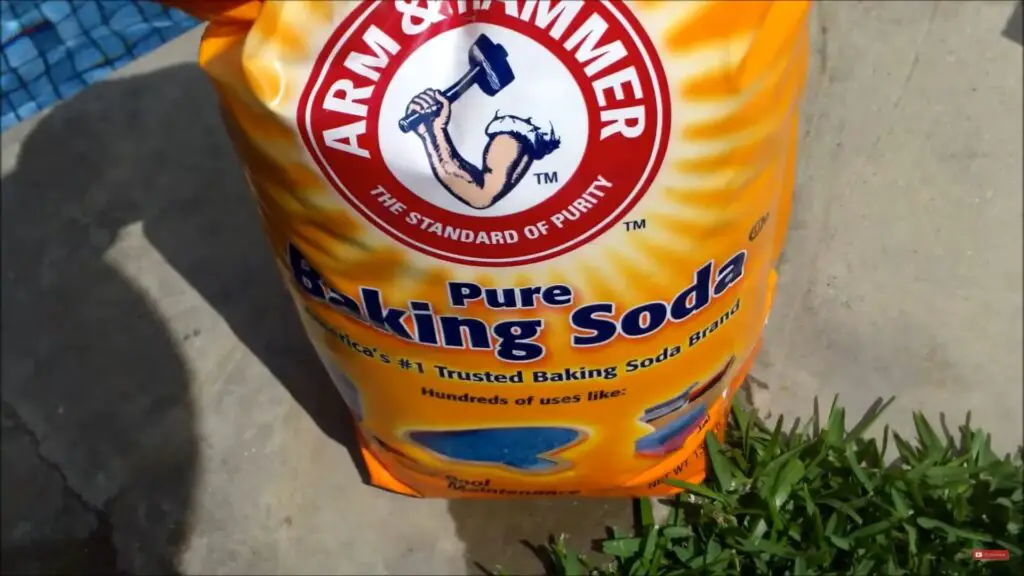
In this post I will tell you about the right way to use Algaecide and Baking Soda, so that you can keep your pool free of algae and maintain the pH level and alkalinity of the pool water within the recommended range.
How Long After Algaecide Can I Add Baking Soda?
If you want to really enjoy your pool the entire season make sure to add the swimming pool maintenance chemicals regularly. Algaecide should be added every week. Run the pool pump so that the algaecide can circulate and be present uniformly in all parts of the pool.
Algaecide may not be very effective in killing existing algae. You need chlorine for that. But Algaecide is very effective in preventing the growth of algae. Algaecide and chlorine work hand in hand. Algaecide is the backup to chlorine.
Chlorine kills existing bacteria. Algaecide prevents new algae growth.
Algaecide, by itself, does not alter the pH or alkalinity of your pool significantly. However, the interplay between chlorine and algae levels does determine the pH & alkalinity of the pool water.
The pH & alkalinity level of the pool water should be tested 24 hours after adding the Algaecide. 24 hours is enough time for complete circulation. If the alkalinity is below 100 ppm you will need to add Baking Soda.
Use https://app.poolcalculator.com/ to calculate the right quantity of Baking Soda to bring up the alkalinity to between 100 and 150 ppm.
Can you Add Shock and Baking Soda Together?
Algae is a microbial plant that thrives in the right ambient conditions, such as the pH level, sunlight, etc. Algae will thrive when the pH level of the water is between 7 and 9. For most algae the range 8.2 – 8.7 is the sweet spot.
If there is a high growth of algae in your swimming pool, then you need to shock the pool. Shocking the pool is adding very high levels of chlorine to kill the algae.
However, for the chlorine to be effective the pH level of the pool water has to be below 7.8. To bring the pH level below 7.8, you need to add something acidic such as muriatic acid.
You should never add Baking Soda before or with the shock because Baking Soda will raise the pH level. This is just the opposite of what is required. The chlorine will not be effective in killing the bacteria.
You need to SLAM your pool if it has turned green all over. In other words your pool is experiencing an “algae bloom”.
SLAM is an acronym for SHOCK, LEVEL AND MAINTAIN.
The term SLAM has been coined by Trouble Free Pool (TFP).
The SHOCK stage is when you add the high dose of chlorine, at repeated intervals, till all the algae have been killed off. The LEVEL stage is when you balance the pH level of the pool water.
I highly recommend using the HTH Super Green to Blue Advanced Shock. It is a 2-part system.
Pack I shocks your pool with a boost of chlorine, helping you fend off bacteria. Pack II is a powerful flocculant that drops particles to the bottom of the pool for easy vacuuming.
Both packs work together to create beautiful, crystal-clear pool water within 24 hours.
So, Baking Soda should be added after, not just before or with the shock.
How Long After Shocking Pool Can I Add Baking Soda?
It is unlikely that you will be able to kill all the algae in a green pool with just one shock. A good practice is to add Algaecide after each shock cycle. The Algaecide should be added 24 hours after the shock was added.
The primary algae killer is the chlorine in the shock. The algaecide kills a bit, but it’s main role is in preventing the growth of algae.
You need to check the chlorine & pH level of the water after each shock. You can stop shocking your pool when you are losing less than 1 ppm of chlorine overnight. It is now time to level the pool.
If you are using a shock that has cyanuric acid in it then you need to keep a watch on the cyanuric acid levels in the pool too!
First add the right amount of chlorine so that the chlorine level reaches 3 ppm. Next add Algaecide. The Algaecide will work with the chlorine to keep algae at bay.
Check the pH level of the pool water. If it is below 7.2, the pool water is too acidic for swimming. It will cause eye and skin irritation. The alkalinity will likely be below 100 as well.
Use https://app.poolcalculator.com/ to calculate the right quantity of Baking Soda to bring the pH level of the pool water to between 7.4 and 7.6.and alkalinity to between 100 and 150 ppm.
Recommended Swimming Pool Chemicals
Best All Purpose Algaecide
Kem-Tek Pool & Spa Concentrated Algaecide is very effective for prevention of algae and also helps to clarify cloudy pool water. It has a non-foaming formula and can be used in all types of pools.
Best Baking Soda for Pools
Arm & Hammer Baking Soda has multiple uses in the home, cleaning, laundry & deodorizing. It works great for increasing swimming pool alkalinity too!
Best Multi-purpose Pool Shock
The HTH Super Green to Blue Advanced Shock is a 2-part system. Pack I shocks your pool with a boost of chlorine, helping you fend off bacteria. Pack II is a powerful flocculant that drops particles to the bottom of the pool for easy vacuuming. Both packs work together to create beautiful, crystal-clear pool water within 24 hours.
How To Use: Simply follow the on-pack instructions for both Pack I and Pack II. Pack I is the Cal Hypo Shock treatment and Pack II is a flocculant that drops dead particles to the bottom of the pool for easy vacuuming.
Bottom Line
The bottom line is that
- Algaecide & Baking Soda should never be added to the swimming pool together.
- Baking Soda can be added to the pool 24 hours after adding Algaecide. Add the correct quantity if the alkalinity of the pool is below 100 ppm.
- Shock & Baking Soda should never be added to the swimming pool together.
- Baking Soda can be added to the pool 24 hours after the shock phase has been completed. Add the correct quantity if the alkalinity of the pool is below 100 ppm.
Thank you very much for reading the post. I do hope you found it informative and helpful.

